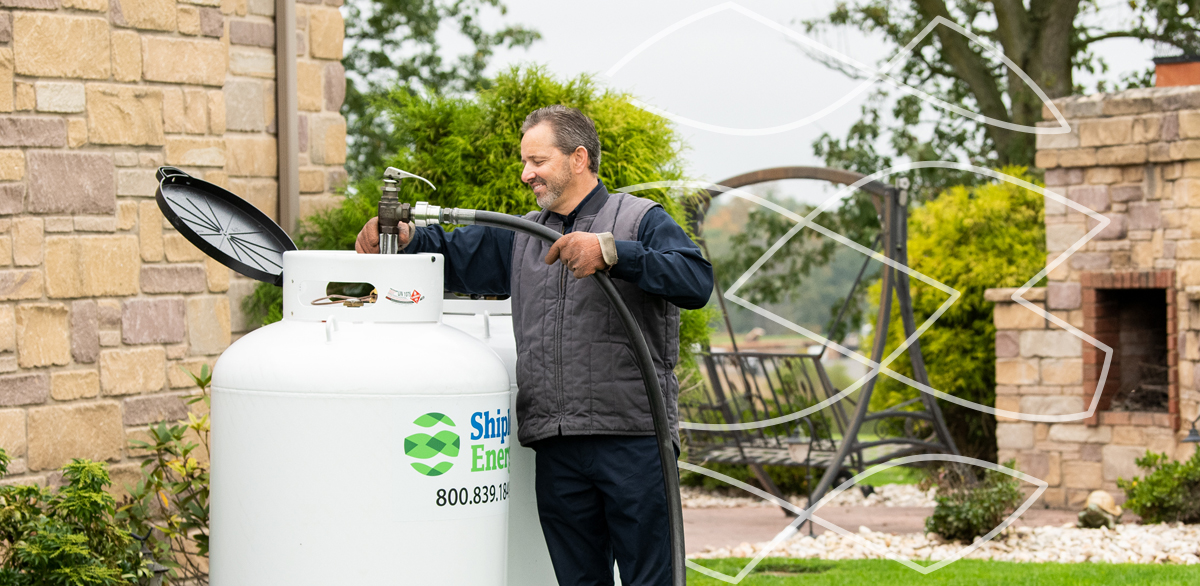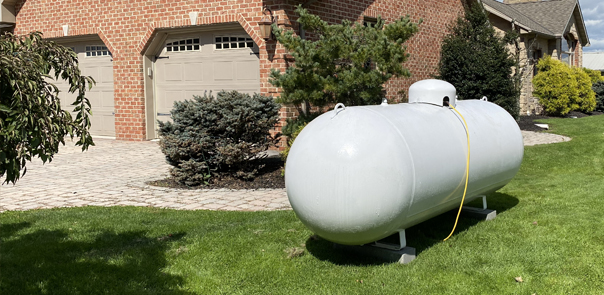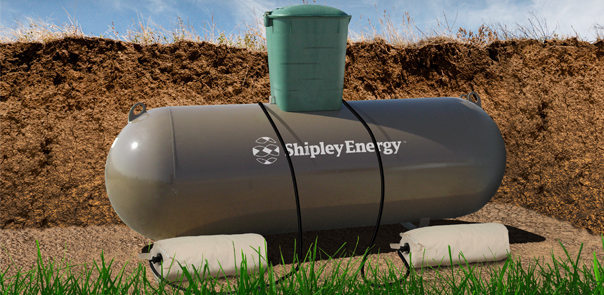
While propane is a safe, reliable, and clean energy source, you must be aware of a few basic safety tips to keep you safe and your home warm all winter. Proper storage and use are crucial for everyone’s well-being, whether in homes or businesses. At Shipley Energy, we prioritize propane safety to protect your loved ones in your home.
Propane is a versatile and widely used flammable gas known as liquefied petroleum gas (LPG). It is a gas that is typically compressed and stored as a liquid. While it offers many great benefits, like being an efficient energy source, specific safety precautions must be implemented to prevent accidents. The uses for propane are nearly limitless. Keep reading to discover best practices for safely managing propane in homes or businesses year-round.

Regular check-ups of your propane tank can help avoid potentially dangerous issues. Look out for signs of wear, rust, or dents. Getting a professional to examine the tank thoroughly is crucial if anything looks out of the ordinary.
Monitor the valves and ensure they are in good working condition. If they stick or don’t turn off properly, they might lead to leaks or inefficient gas usage.
Regularly monitoring your propane tank for leaks is essential. A practical method for this is the “soapy water” test: bubbles indicate a leak when applied to the tank’s surface. However, the most reliable way is to contact a propane professional and let them assess the situation safely.
Most propane tanks will have a gauge under the lid or near the shut-off valve. Once you locate the gauge, you will see a needle in the meter indicating the propane percentage in the tank. So that propane gas has room to expand with changing temperatures, an above-ground tank is considered full at 80% of its capacity. Unless you get automatic deliveries, you must regularly monitor your tank level to ensure you don’t run out. You should call Shipley Energy to request a delivery when your tank is in the 30-40% range.
To avoid monitoring your tank, set up automatic deliveries with us today! Call us at 717-356-3624 to never worry about running out of heat again.
Did you know that propane is odorless in its natural state? For safety reasons, an odorant that smells like rotten eggs is added. This distinctive smell is an alert mechanism. If you ever smell it, know it’s a clear sign of a propane leak. If you suspect a leak in your propane tank, call one of our propane team members immediately to schedule your leak check now at 717-356-3624.
One of the significant benefits of propane is that you don’t have to worry about your propane tank freezing. Propane freezes in extremely cold temperatures like -44 degrees Fahrenheit.
Will the propane in your tank freeze outside in the winter?
Shipley Energy’s Director of Propane Operations, Beth Donovan, has the answer.
Learn more about propane deliveries from Shipley Energy online!
Cathodic Testing is a certified test done on underground propane tanks to test the tank’s capability to withstand corrosion in the ground. When preparing your underground propane tank, knowing and understanding the benefits of cathodic testing is essential. Keep reading to learn how it’s done –
Each underground propane tank is installed with an anode bag. The anode bag helps prevent corrosion and leaks in the propane tank. Depending on your soil, your anode bag could be used up in as little as six years. Cathodic Testing can ensure your underground tank will continue to be protected from corrosion and leaks, keeping your family members safe.

According to the NFPA 58 LP-GAS codes, the industry benchmark for propane storage, handling, transportation, and use, cathodic testing must be done at least every 36 months.
Keep reading to learn more about tank-specific regulations for your propane tank.
Learn more about cathodic testing from one of our dedicated Shipley Energy professionals.
Schedule Your Cathodic Test – Call Shipley Energy today at 717.896.1907!
Thank you for reading chapter 1 of our propane homeowner’s guide! If you would like to learn more feel free to read our other chapters.